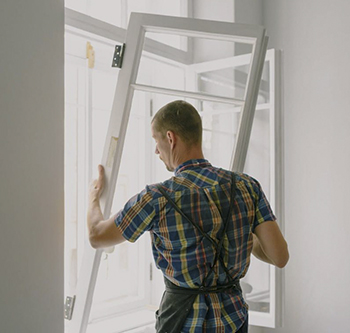Crumbling concrete
[edit] What is crumbling concrete ?
Crumbling concrete describes failure where concrete parts are filling off in chunks and the strength of the overall material is compromised. It can simply be the result of ageing but maybe worsened where the initial pour was not managed correctly, where reinforcement elements are beginning to corrode or where the material is exposed to harsh elements or mechanical damage.
In December 2022 the UK Government published 'Reinforced autoclaved aerated concrete (RAAC): estates guidance'. The guidance set out a 5-stage approach to the identification and management of RAAC in educational buildings, where these maybe present in floors, walls and roofs (pitched and flat) of buildings constructed or modified between the 1950s and mid-1990s. This guidance outlined initial steps that should be taken by those responsible for the management of educational buildings, how to procure building professional’s services when specialist advice is needed. It was designed for all parties involved in the identification and management of RAAC, including estates managers and those providing specialist advice, can use this guidance.
In mid 2023 UK ministers Ministers launched a UK government-wide inquiry into the use of crumbling concrete, in particular occurring in reinforced autoclaved aerated concrete (RAAC). Initial indication is that many of the installations at risk are over 30 years old which may be beyond the expected lifespan of the product. Typically these are low-rise flat roofed structures built between mid-1960s and mid-1990s primarily of RAAC blocks.
[edit] Related articles on Designing Buildings
- Admixtures in concrete.
- Alkali-activated binder.
- Alkali-aggregate reaction (AAR).
- Alkali-silica reaction (ASR).
- Cellular concrete.
- Concrete masonry unit CMU.
- Concrete superplasticizer.
- Defective Concrete Blocks Grant Scheme.
- Rebar.
- Recycled concrete aggregate RCA.
- Reinforced concrete.
- Spalling concrete.
- Stratification of concrete.
- The properties of concrete.
- The use of concrete structures to protect construction sites.
- Types of concrete.
- Ultra high performance fibre concrete.
- Vibration Compaction Technology.
- What will happen if we use too much rebar in concrete?
[edit] External links
https://www.gov.uk/government/publications/reinforced-autoclaved-aerated-concrete-estates-guidance
Featured articles and news
Licensing construction in the UK
As the latest report and proposal to licence builders reaches Parliament.
Building Safety Alliance golden thread guidance
Extensive excel checklist of information with guidance document freely accessible.
Fair Payment Code and other payment initiatives
For fair and late payments, need to work together to add value.
Pre-planning delivery programmes and delay penalties
Proposed for housebuilders in government reform: Speeding Up Build Out.
High street health: converting a building for healthcare uses
The benefits of health centres acting as new anchor sites in the high street.
The Remarkable Pinwill Sisters: from ‘lady woodcarvers’ to professionals. Book review.
Skills gap and investment returns on apprenticeships
ECA welcomes new reports from JTL Training and The Electrotechnical Skills Partnership.
Committee report criticises UK retrofit schemes
CIOB responds to UK’s Energy Security and Net Zero Committee report.
Design and construction industry podcasts
Professional development, practice, the pandemic, platforms and podcasts. Have we missed anything?
C20 Society; Buildings at Risk List 2025
10 more buildings published with updates on the past decade of buildings featured.
Boiler Upgrade Scheme and certifications consultation
Summary of government consultation, closing 11 June 2025.
Deputy editor of AT, Tim Fraser, discusses the newly formed society with its current chair, Chris Halligan MCIAT.
Barratt Lo-E passivhaus standard homes planned enmasse
With an initial 728 Lo-E homes across two sites and many more planned for the future.
Government urged to uphold Warm Homes commitment
ECA and industry bodies write to Government concerning its 13.2 billion Warm Homes manifesto commitment.
From project managers to rising stars, sustainability pioneers and more.
Places of Worship in Britain and Ireland, 1929-1990. Book review.
The emancipation of women in art.























